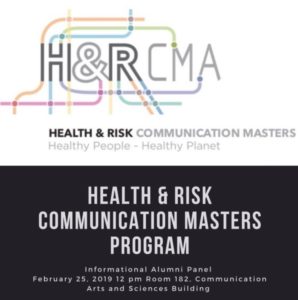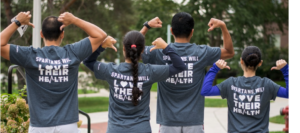“For the things we have to learn before we can do them, we learn by doing them.” Aristotle
One method of teaching that I try to incorporate into all of the classes that I teach is experiential learning. Experiential learning is defined as the process of learning through experience and reflection. I have found that this method helps the students solidify the concepts that I am teaching in class.
When integrating experiential learning into a class, I try to act as a guide for the students. This allows the students to fail in a safe space, reflect on this failure, and try again. I have found that by acting as a guide rather than a director allows them to learn the concepts and their application more effectively. Additionally, this allows them to demonstrate their creativity and to understand that there is more than one way to complete a project.
For the experiential learning projects, I always try to partner with a non-profit or an organization that doesn’t have the resources to develop campaigns. I do this as much as possible, to serve in the missions of being a land-grant institution to bring knowledge and resources to our surrounding community. Additionally, partnering with a a real organization, provides the students the opportunity to meet the needs of a real client and not just focus on a grading rubric.
I have used experiential learning in two of the courses that I teach on a regular basis, as a semester long project. I have used it in my Public Health and Mass Communication graduate course as a way for the students to plan a health promotion campaign. Some of the partners included Olin Health Service, MSU Graduate Life and Wellness, and Michigan Fitness Foundation. Many of the organizations ended up adopting portions of the students’ proposals. For example, one student group came up with health promotion around “Love your health” and the following year it was incorporated into the Graduate Student Life and Wellness’s 2016 campaign, as “Spartan’s Will Love Their Health.”
I also teach an undergraduate student Public Relations capstone course, Public Relations Strategy. For that class, we worked with one on-campus organization, the Health and Risk Communication Masters Program. The objective of the project was to create a campaign around boosting the awareness of the program. Through this project, the HRC MA project activated their social media accounts on Facebook and LinkedIn, as well as laid the groundwork for an alumni panel event.
Many of my students have reported that they have enjoyed these projects and have felt that this helped them better understand the context, and that the concepts became more concrete in their minds.
“Overall, I found the course to be very educational. I am definitely someone who learns from example and by doing work hands on and that’s exactly what this class was.” ADV 425 Student.
In my experience, this is a great way to help the students put into action the course materials. However, for me this wasn’t something that initially came easily to me. It was a struggle for me at first to communicate to the students and the organizations, of what is expected and to manage expectations. Additionally, I had to learn to better tie in the classroom material to the projects. I am still struggling with how to get the students to be a bit more reflective in these experiences, but I also think that will improve as I am better able to communicate how these reflections should be used in their learning – and not just viewed as busywork.
Through using an experiential learning method – I have also learned by doing. I love that my students feel like they are “doing something real” and I have enjoyed working with them and the various organizations around campus and the university.

